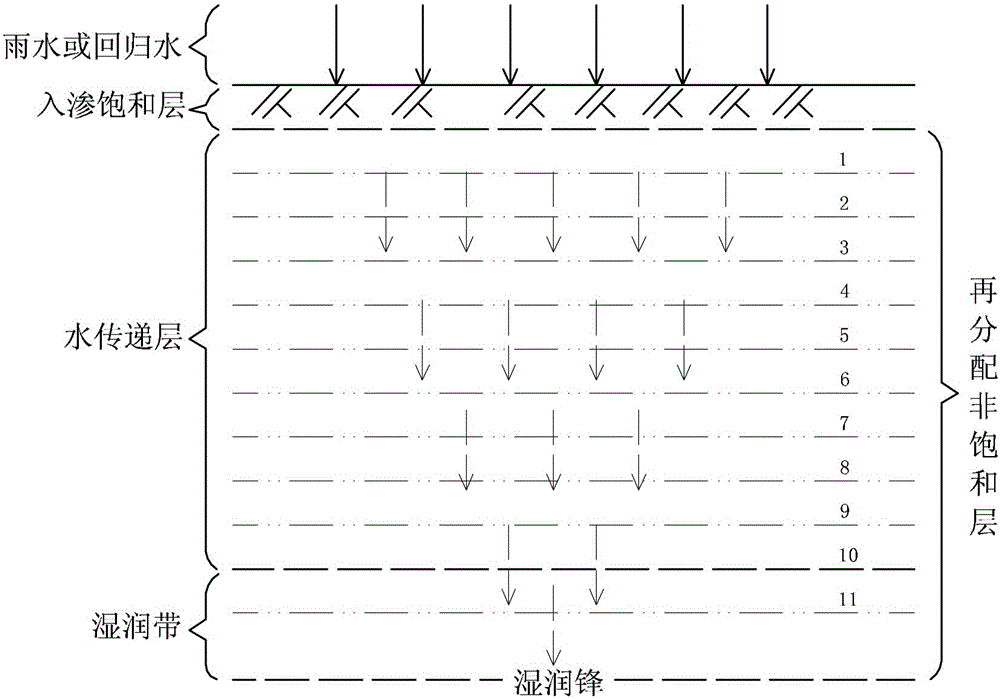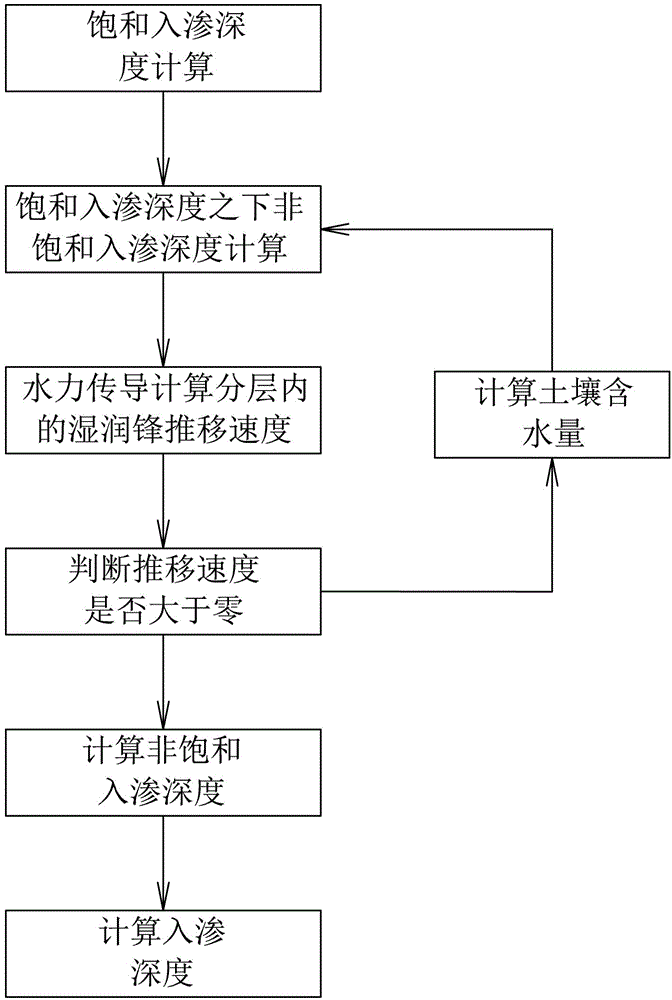Method for calculating critical burying depth of rainfall infiltration recharged groundwater
A calculation method and groundwater technology, applied in the direction of calculation, special data processing applications, instruments, etc., can solve problems with subjective preferences, difficult to popularize and apply, lack of mechanism of action and physical process, etc., to achieve clear physical process and mechanism of action, The effect of reliable theory and technical support
- Summary
- Abstract
- Description
- Claims
- Application Information
AI Technical Summary
Problems solved by technology
Method used
Image
Examples
Embodiment 1
[0052] This embodiment is a method for calculating the critical buried depth of groundwater recharged by rainfall infiltration.
[0053] According to the principle of water infiltration and the critical definition of groundwater recharge, the position where the infiltration process is completed and the wetting front disappears is the critical buried depth for infiltration and groundwater recharge. The actual infiltration recharge groundwater table should be above the critical buried depth. Such as figure 1 As shown, the maximum infiltration depth that infiltration may reach is the critical depth. When the phreatic depth is greater than the maximum infiltration depth, the infiltration will stop if it cannot reach the aquifer, and the groundwater recharge cannot be realized. Any groundwater depth within the maximum depth can complete infiltration recharge. The two most important physical quantities for determining the critical depth are the water supply (rainfall + return wat...
Embodiment 2
[0097] This embodiment is an improvement of the first embodiment, and it is a refinement of the first embodiment on the "soil water potential of the wetting front". The empirical formula for calculating the "soil water potential of the wetting front" in the "steps for calculating the moving velocity of the wetting front in the layer by hydraulic conduction" described in this embodiment is:
[0098]
[0099] in:
[0100] h— — is soil suction, cm H 2 O,
[0101] θ s - is the saturated moisture content of the soil,
[0102] θ r —— is the soil withering water content,
[0103] θ - soil water content,
[0104] α , m , n —— is the parameter, where, . These three parameters are related to soil texture,
[0105] Table 1 Different soils and the value of
[0106] Soil texture (cm 3 / cm 3 ) ( cm 3 / cm 3 )
Embodiment 3
[0108] This embodiment is an improvement of the first embodiment, and it is a refinement of the first embodiment on the "unsaturated hydraulic conductivity of the wetting front". The empirical formula for calculating the "unsaturated hydraulic conductivity of the wetting front" in the "steps of calculating the moving velocity of the wetting front in the layer" described in this embodiment is:
[0109] K(θ) = K S (θ / f) b
[0110] in:
[0111] K(θ) ——is the unsaturated hydraulic conductivity,
[0112] θ - is the soil water content,
[0113] K S —— is the saturated hydraulic conductivity,
[0114] f—— is the soil porosity,
[0115] b —— is the empirical coefficient, which is generally taken as 2 for clayey soil and 4 for sandy soil.
PUM
 Login to View More
Login to View More Abstract
Description
Claims
Application Information
 Login to View More
Login to View More - R&D
- Intellectual Property
- Life Sciences
- Materials
- Tech Scout
- Unparalleled Data Quality
- Higher Quality Content
- 60% Fewer Hallucinations
Browse by: Latest US Patents, China's latest patents, Technical Efficacy Thesaurus, Application Domain, Technology Topic, Popular Technical Reports.
© 2025 PatSnap. All rights reserved.Legal|Privacy policy|Modern Slavery Act Transparency Statement|Sitemap|About US| Contact US: help@patsnap.com



